Robotics Advance with AI Technologies
Efficiency, Automation, and Enhanced Security and Safety Across Industries
Challenges — and Opportunities — in the Industrial Robotics Sector
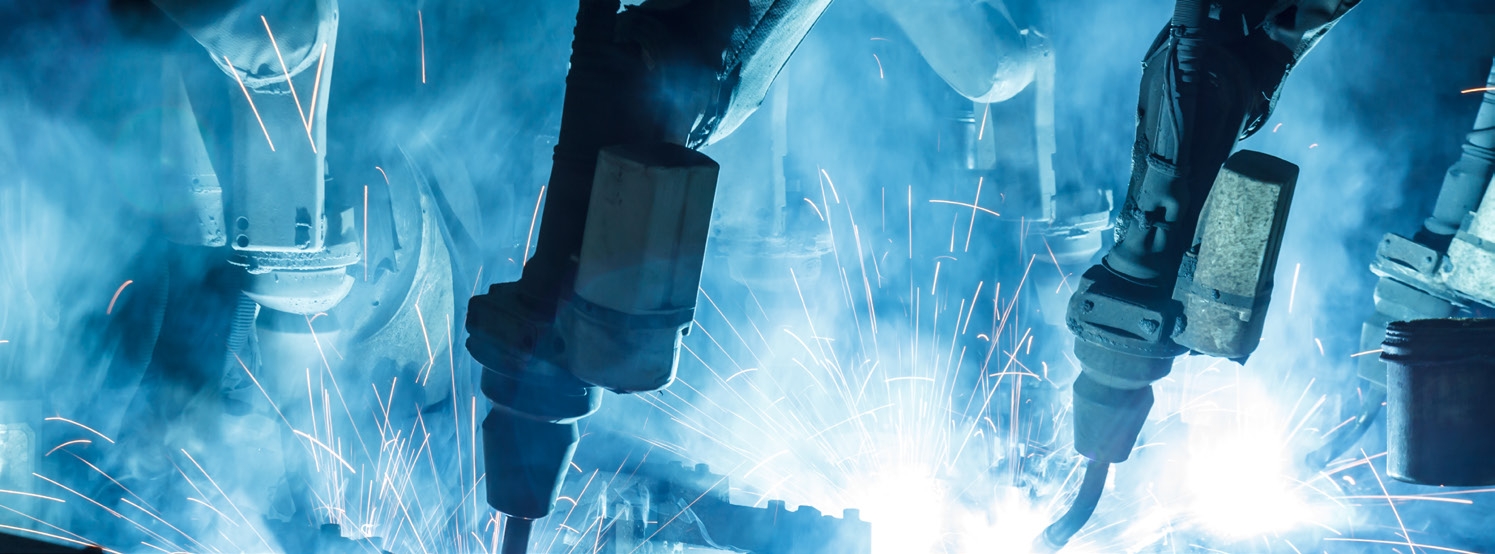
Despite surging interest in industrial robotics, fundamental challenges still exist when trying to perform business operations and automate work-flows across hybrid network environments and disparate systems.
But recent advances in artificial intelligence (AI) combined with new communication technologies, including 5G, help integrate robotics into software-defined infrastructures as part of the full-scale digital transformation of organizations. This confluence of technologies creates abundant opportunities for factory automation, transportation break-throughs, and unprecedented efficiency.
Expanding the range of use cases for robotics in Industrial IoT (IIoT) environments requires resolving long-standing technical roadblocks. This includes the challenge of integrating diverse components across heterogeneous networks; employing machine learning to build and operate intelligent systems that adapt to workflows; and implementing responsive, low-latency communication services to interact with robotics systems in real time. The fourth industrial revolution, popularly known as Industry 4.0, is driven by digital transformation, high-speed connectivity, lightning-fast communications, IIoT best practices, and AI technologies. These solutions are predicted to increase operation costs savings by 8.5%2, according to ABI Research and Ericsson. Those organizations that embrace the empowering technologies are well positioned to gain the benefits conferred: organization-wide cost savings, greater agility in software development and deployment, more complete integration with existing business units and systems, and enhanced efficiencies across all areas of business operations.
Integration of AI and robots will spur market growth by a projected CAGR of 15.1% over the forecast period, reaching USD 66.48 billion by 2027.
— Fortune Business Insights,
June 25, 2020 1
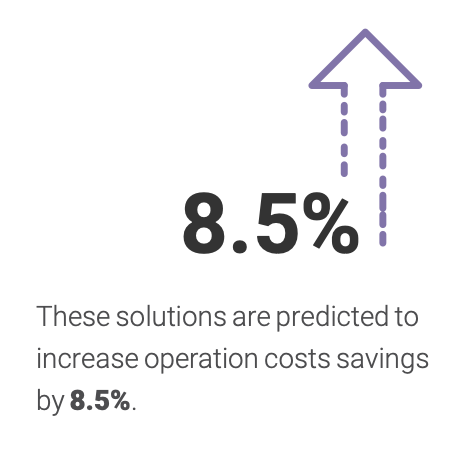
Accelerating Digital Transformation

Advances in supporting technologies have enabled a widespread transition beyond traditional industrial robots in production processes.
On the rise are AI-enabled collaborative robots, autonomous vehicles, non-piloted drone operations, and an expanding array of innovative use cases. As barriers between human activities and robotic capabilities diminish — moving beyond the fenced activities of last-generation industrial robots — use cases are emerging that combine activities and work models as humans and robots work together on tasks.
Solutions from Wind River® help accelerate digital transformation within organizations, building and powering critical infrastructures and delivering the technologies and expertise that make possible the deployment of Industry 4.0 solutions. Edge computing and 5G represent complementary technologies that make the intelligent edge a reality.
The rising interest in AI-first solution modeling suggests that a rethinking of conventional industrial robotics design and development is needed. Rather than relying on an approach in which existing machine operations are essentially augmented by bolting on AI-driven components, AI-first puts the intelligence at the forefront of the design process to perform at the core of a task. The focus is on building solutions that meld hardware and software to effectively use machine learning and AI-guided functions, performing operations with greater speed, reliability, security, and safety. Wind River solutions and purpose-built embedded components provide an extensive roadmap leading to the benefits and enhanced business value provided by industrial robotics. As with digital transformation, the AI-first approach requires a rethinking of traditional design — transforming architectures to satisfy the solution requirements over the full lifecycle, rather than just reorganizing and tinkering with existing solutions.
“Critical to realizing the full potential of AI across an organization [is] gaining enterprise-wide support for the initiative, which means conceptualizing with stakeholders the positive business outcomes that could be achieved.”3
—Rajeev Ronanki,
Forbes
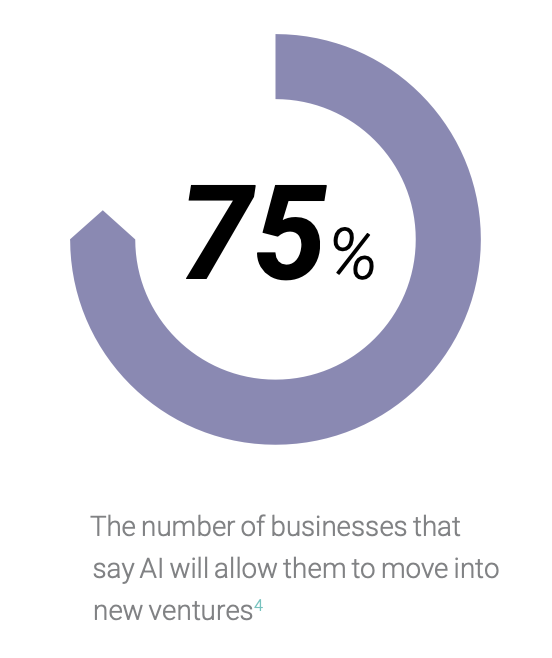
The Growth of the Industrial Robotics Sector
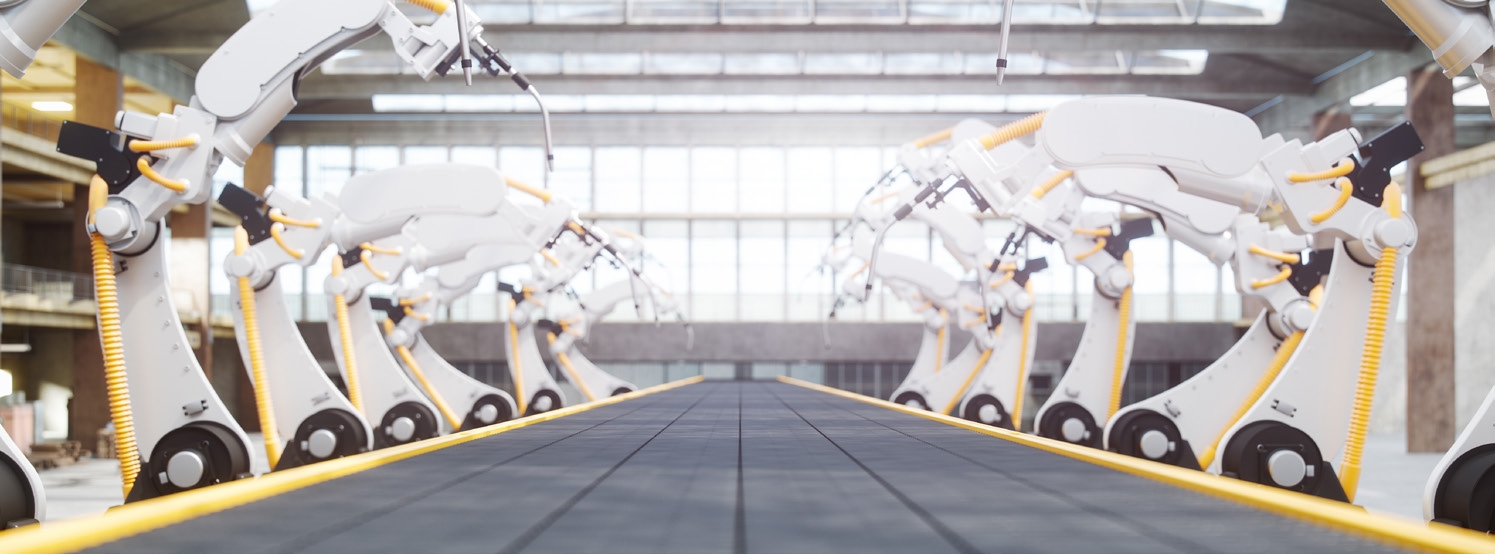
A convergence of hardware and software technologies underlie diverse industrial use cases, powering smart energy infrastructures, directing autonomous vehicles, and automating process using robotics. These complex Industry 4.0 advances require control, connectivity, and security components compliant with prevailing standards for deploying reliable systems that are smart and safe.
Among the areas in robotics that are gaining momentum, enabled by emerging technologies, are:
Autonomous vehicles: Key systems — including vehicle-to-vehicle communications, navigation, and driver-assistance technologies — are enabled by the increase in available 5G network base stations and communication enhancements.
Automation on the factory floor, in power substations, and on industrial sites: A new generation of intelligent mobile robots (sometimes called automated guided vehicles) are using real-time, closed-loop controls to perform inspections, transport components in warehouses, and improve efficiencies in manufacturing processes.
Agricultural uses: Unmanned tractors and intelligent guided drones are surveying agricultural lands, planting crops, monitoring water supplies and plant health, and harvesting produce.
Exoskeletons: To support heavy-duty tasks or ergonomically challenging human operations, exoskeletons amplify the strength and mobility of human workers, making it possible to lift heavy equipment in warehouses or perform other physical tasks requiring great strength.
Production line improvements: In the electronics and transportation industries, robots participate in activities such as assembling products from parts, welding heavy equipment, loading and unloading heavy items, fabricating printing circuit boards, and testing and validating completed products.
Space exploration: Unmanned space missions and AI-guided robotic vehicles — such as the Mars rover powered by VxWorks® — play a key role in exploration of the universe, mapping planetary terrains, retrieving data from distant boundaries of the solar system, and contributing to knowledge about Earth’s systems and changing climate.
As AI becomes increasingly sophisticated and the intelligent edge is fortified with new technologies, including key building blocks from Wind River, the opportunities for using industrial robots in the manufacturing, transportation, and aerospace sectors will continue to climb.
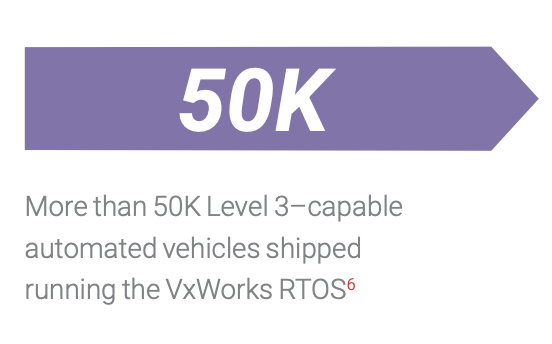
“Wind River leads the overall embedded OS market with an extensive portfolio of products and services that is able to meet the diverse range of edge compute needs across the telecommunications/networking, industrial automation, and aerospace and defense vertical industries.”5
—Chris Rommel,
Executive Vice President,
VDC Research
Building Blocks for Industry 4.0 Robotics Solutions

Industry 4.0, essentially an offshoot of the global drive toward digital transformation, is enabled by a combination of new architectural models and software-defined infrastructures composed of interoperable building blocks — many of them developed by Wind River.
Wind River Studio unifies cloud platform, orchestration, and analytics capabilities, allowing industrial equipment companies to develop and encompass 5G communications and intelligent edge infrastructures in their products. This integration will expand the scope of IIoT solutions as well as the functions, operations, and services of industrial robotics.
At the heart of many industrial robotics deployments, particularly when safety and security are essential, the VxWorks RTOS has been used in a wide range of critical infrastructure environments. These components can save time in meeting certification requirements when used in combination with platform solutions or infrastructure elements. And for meeting the most rigorous industry requirements, VxWorks Cert Edition has been specifically designed for safety-critical applications. VxWorks Cert Edition is supported by certification evidence spanning industrial, avionics, and automotive applications, meeting the highest achievable standards set by certification authorities.
As the industry-leading open source operating system for connecting, securing, and running embedded systems and applications, Wind River Linux offers a comprehensive suite of products, tools, and lifecycle services to help build and support intelligent edge devices. Wind River Linux enables containerization for flexible, agile application installations. It provides an open OS that can be used for robotics subsystems, such as human-machine interface (HMI), communications, sensor controls, and more.
Often, the most challenging aspect of launching a project involving industrial robotics is made up of the design, development, deployment, and testing issues that need to be resolved before final hardware and components are available to the developers. This is the core capability offered by Wind River Simics®. To enable engineers to work independently of physical hardware, Simics provides a comprehensive simulation platform that employs virtual hardware components to accelerate solution design, integration, and testing. This capability offers unique advantages for teams building industrial robotics systems, allowing the software to be developed in tandem with the engineering of robotics hardware — even before the hardware is finalized.
A new version of Simics introduced in late 2019 strengthened cybersecurity features and reengineered the code to align more closely with DevOps practices. Architected to support the complete product lifecycle — including the initial design, the deployment, and the end-of-life maintenance — Simics incorporates a continuous integration/continuous deployment framework. Within this framework, developers can conduct automation tests and simulate security issues to ensure that the solution responds effectively to a wide range of attack vectors and contends with detected vulnerabilities.
Having a robotics development team sharing information and discoveries with the operations team leads to improved communication and, ultimately, increased time savings and more success. Simics is the unifying tool for guiding development, communicating issues, validating solution security and integrity, and rapidly eliminating bugs.
Wind River OS Solutions
VxWorks: The world’s leading commercial real-time operating system (RTOS), VxWorks excels at high-performance industrial applications, including robotics, control automation, and intelligent vehicle applications.
VxWorks Cert Edition: This OS provides developers of safety-critical systems with a COTS platform for delivering applications that must be certified to the stringent requirements of software safety standards, including RTCA DO-178B, EUROCAE ED-12B, IEC 61508, and ISO 26262
Wind River Linux: A complete Linux development platform for embedded device development, Wind River Linux comes with the latest kernel, toolchains, tools, and more than 500 packages to enable customers to develop a wide variety of devices across networking, A&D, industrial, energy, and transportation segments.
Wind River Platforms and Tools
Wind River Simics: This comprehensive system simulation environment streamlines de- sign, development, and testing of complex robotics systems. Simics accommodates agile and DevOps software practices and enables teams to shorten development cycles and thoroughly test embedded system designs without physical hardware present.
Wind River Studio: Wind River Studio integrates cloud platform, orchestration, and analytics capabilities, allowing industrial equipment companies to develop and encompass 5G communications and intelligent edge infrastructures in their products. This environment will expand the scope of IIoT solutions as well as the functions, operations, and services of industrial robotics.
Wind River Helix™ Virtualization Platform: Spanning hybrid cloud networks and multiple operating systems, this software platform supports flexible, resource-efficient, virtualized frameworks in robotics implementations.
Reducing Downtime with Industrial Robotics Solutions

Nimble, streamlined development processes and an architecture constructed of proven, interoperable components provide the infrastructure for reliable, high-performing industrial robotics solutions. Wind River supplies the embedded software expertise; an unrivaled real-time operating system, VxWorks; flexible, standards-based virtualization tools; and deep experience crafting intelligent edge solutions. The result is an exceptionally adaptable, future-proof infrastructure architected to the latest open standards and designed to equip developers and engineers with everything they need to take advantage of robotics advancements and reduce downtime in industrial environments.
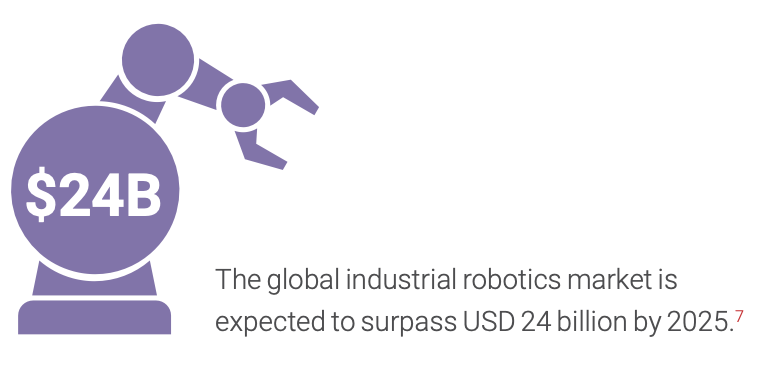
“A lot of people think that it’s just connecting devices and collecting data. Industry 4.0 is really about making business decisions based on data that is gathered through connectivity. Engineers need to make sense out of the data and incorporate AI to improve process efficiencies and production equipment, and ultimately achieve zero downtime.”8
—Chris Blanchette,
Executive Director for Global Accounts,
FANUC America
References
- www.globenewswire.com/news-release/2020/06/25/2053482/0/en/Industrial-Robots-Market-to-Reach-USD-66-48-billion-by-2027-Integration-of-AI-in-Robots-to-Promote-Growth-states-Fortune-Business-Insights.html
- connectedworld.com/industry-4-0-and-ai-best-practices/
- www.forbes.com/sites/cognitiveworld/2019/02/25/building-an-ai-first-organization/#33f86f034d88
- Forbes/Inc.Digital
- www.edgeir.com/wind-river-sails-past-microsoft-leads-in-edge-compute-os-for-iot-and-embedded-markets-20200726
- resources.windriver.com/i/1270445-realize-the-digital-future-of-the-planet-with-real-time-ai-systems/0?
- www.businesswire.com/news/home/20200127005283/en/Global-Robotics-Market-Valued-34-Billion-20
- www.assemblymag.com/articles/95694-robotics-in-the-age-of-industry-40